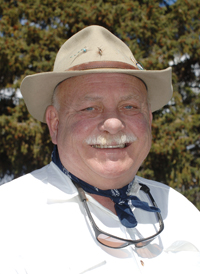Fishing has been strong on most of our river systems. But things are changing in terms of hatches, time of day for success, fish size and methodology in taking them. More importantly, I'm beginning to get a clearer picture as to what the next few weeks into fall could bring. Higher than normal water levels, particularly on our freestone waters, may have impacts. Let's have a look:
SILVER CREEK—Obviously, water levels aren't an issue on the Creek but hatches will be. Trico is pretty much done for the year but there will be a few bugs lingering about. Unfortunately, if you blink, you may miss it for it may last less than 30 minutes. Regardless, I certainly would have a few Dave's Trico's #22 in my box, just in case. Also, the little Beatis spinner hasn't been a barnburner this year, but it will be around. A Mason Quill Beatis Spinner #22 is very useful. From this point forward, things will shift into the afternoon with Callibeatis duns now emerging in the pond, floating sections. Because it is a larger fly, this is a wonderful hatch and one that I have come to enjoy and look forward to over the years. It will get a size smaller by mid-September but for now, a Thorax or Parachute Speckled Dun #18, a Crippled Callibeatis #18 and a Callibeatis Nymph #18 will do the job. Note: It's not found in the main flowing sections of the stream so don't look for it there.
BIG WOOD RIVER—Don't blame me for all the small fish coming to your surface imitations. I don't make up the rules of the game. Just consider what will be there next year. Slightly higher than normal water levels have prevented the larger fish from finding the tiny hatches of Beatis #18 and the Gray spinners of E. deceptive #16 in the riffle water, early afternoon. Here's a little secret, though: they can be found in the flat, smooth, tail-out sections below heavy riffle water runs. The better fish drop down in these areas to feed but because it's very shallow, they are spooky as hell and one shot casting is often the case. This was a god-awful nightmare in some very low water years during the early 1990s. Be very careful wading in these areas and keep your eyes open. Para Adams #16-18, Para BWO #16-18 and Tan Gulper Specials #18 (fly preferred) take fish. Larger sizes will work but definitely get refusals. Taking the bigger fish are Copper Johns #14 and Bead Head Flashback Pheasant Tails #12-14, with tiny weight. No Red Quills (T. hecuba) have been seen but I am on the lookout.
<
BIG LOST—The upper river, North Fork and East Fork, are low but fishing very nicely with a great deal of success. Nice Cutthroat are being taken both dry and wet, using standard patterns. This kind of fishing should remain strong for the next few weeks. The lower river is another story. Water levels remain higher than I like to see and with the reservoir still 80% full, the irrigators will probably keep calling for water well into September (bummer). Solid reports tell of very limited surface activity and most fish are taken subsurface with Copper Johns #12, Prince Nymphs #10-12 and San Juan Worms #8-10. A Griddle Bug #8 is also effective in this type of water as well.
WARM SPRINGS/TRAIL CREEK—Both are low but fishing well with Para Adams #16, Royal Wulffs #16-18 and Prince Nymphs #14-16.
PENNY LAKE/LAKE CREEK/GAVER'S LAGOON (Hayspur Fish Hatchery)—All will be heavily stocked through Labor Day so have at them.
SOUTH FORK OF THE BOISE RIVER—Still high, so be careful wading, but going down. By Labor Day, it should be at winter levels (600 cfs).






































